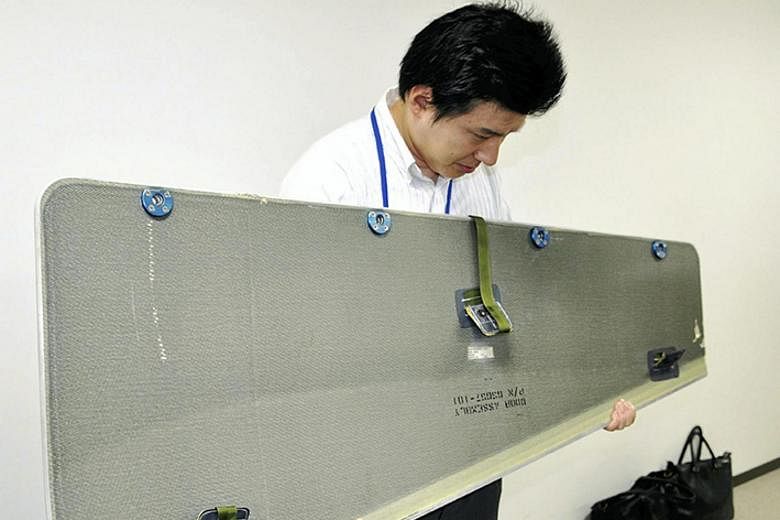TOKYO (THE YOMIURI SHIMBUN/ASIA NEWS NETWORK) - The Japanese government is likely to launch a system of compensation payments for damage caused by objects falling from airplanes arriving at and departing from Tokyo's Haneda Airport.
In the wake of a series of incidents of this kind, the Land, Infrastructure, Transport and Tourism Ministry will also discuss a plan to raise the penalty for airline companies if a part falls off their planes.
As a new flight route over central Tokyo is expected to be introduced by 2020, the ministry will undertake full-fledged measures regarding objects falling from planes.
A total of 437 cases of plane parts falling from the sky were confirmed from April 2009 through October 2016, according to a survey by the ministry.
The falling parts included lights, bolts, panels and tire rubber, among other items, with the weights varying from several dozen grams to several kilograms, it said.
No case has so far been reported of a plane part falling onto a person.
On Sept 23, a panel weighing about 4kg fell off a KLM Royal Dutch Airlines plane that had taken off from Kansai Airport, and hit a car on a road in Osaka.
No one was injured in the incident, but it was the first such case of a falling object hitting a moving car.
On Sept 27, a panel weighing about 3kg that had fallen off an All Nippon Airways aircraft was found in Ibaraki Prefecture.
In response to such incidents, the ministry has indicated it will establish a compensation system, to start by 2020.
The ministry plans to refer to Narita International Airport's compensation system for damage caused by parts falling from aircraft.
This system has been applied in cases when ice or aircraft parts have fallen off planes arriving and taking off at Narita Airport and caused damage to objects like houses, but the plane cannot be identified. Under this system, all airline companies using the airport jointly share the cost of compensation.
Narita International Airport does not disclose the number of cases involving compensation nor the total amount paid.
The ministry has estimated the kind of damage such incidents could cause to houses, cars, trees and other objects. It expects that the amount of payment for each incident could range from tens of thousands of yen to several hundred thousand yen. The ministry plans to implement this system at other airports as well.
The ministry is also discussing the revision of ministerial ordinances and notices so that it will be able to carry out administrative punishments, such as issuing business improvement orders to airline companies when one of their aircraft drops a part.
Airline companies, however, are likely to voice opposition to the system if such punitive measures are taken even if it is not clear whether there was negligence on their side. "We need to further discuss the content of the system," an official of the ministry said.

